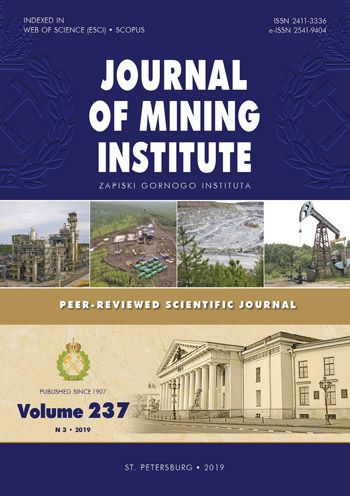Sintered sorbent utilization for H2S removal from industrial flue gas in the process of smelter slag granulation
- 1 — post-graduate student Saint-Petersburg Mining University
- 2 — Ph.D., Dr.Sci. professor Saint-Petersburg Mining University
- 3 — post-graduate student Saint-Petersburg Mining University
Abstract
Authors suggest removing hydrogen sulfide from the hot industrial gas at temperatures 200-300 °C and its subsequent interaction with Fe2O3. For this purpose the following sorbents have been proposed: a mixture of iron oxide and fly ash; iron oxide and pumice; different samples of red mud (bauxite treatment residues containing iron oxide). To prevent dusting and loss of absorbing capacity, the sorbents were shaped into porous granules with other metallic oxides. Materials utilized in the study were obtained the following way: mixing of Fe2O3 with fly ash; sintering of the mixture with red mud. The blend contains aluminum oxide and silica, which can act as matrix shapers, alkali oxides and fluxing agents that reduce the temperature during metal sintering. After the samples had been saturated with sulfur, they were positioned in a venting reservoir, where under the temperature 600-700 °C desorption to the initial state occurred by means of passing an air flow through the sorbent layer. In the process of this operation, sulfur dioxide was released and reactive metal oxides re-emerged. Desorption also generated a small amount of elemental sulfur and sulfuric acid. Absorbing capacity was assessed at higher temperatures, efficiency of H2S removal reached 95-99.9 %. Proposed technology of air cleaning is recommended to use in metallurgic processes with elevated atmospheric pollution, e.g. granulation of melted blast-furnace slag.
Funding
The study has been performed with financial support from the Ministry of Education and Science of Russian Federation (project register number11.4098.2017/PChfrom 01.01.2017).
